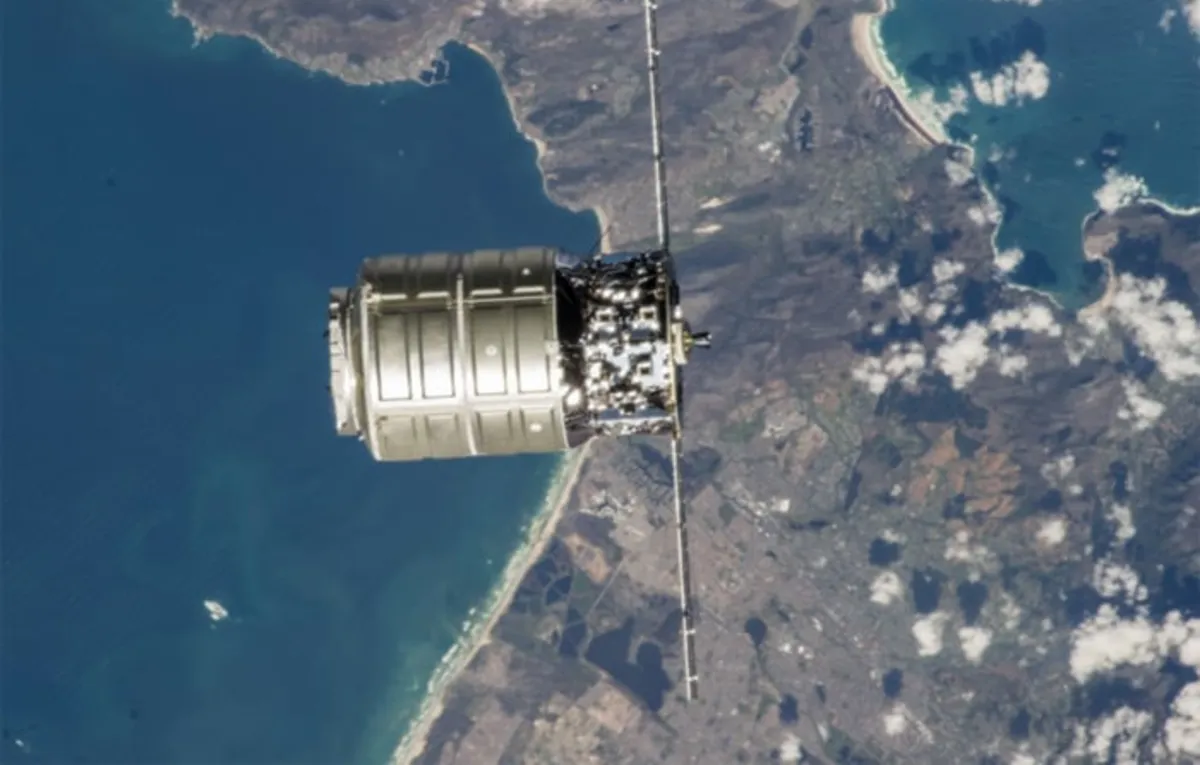
Northrop Grumman's Cygnus cargo freighter, designated as the NG-22, is experiencing an indefinite delay due to damage sustained by its Pressurized Cargo Module (PCM) during shipment. The damage resulted from heavy equipment striking the shipping container, prompting Northrop Grumman to notify NASA of the situation earlier in March.
Upon inspection of the shipping container, engineers confirmed that the PCM did not survive the journey intact. A spokesperson from NASA stated that both NASA and Northrop Grumman are revising their plans for the next commercial resupply launch to the International Space Station (ISS).
The rescheduling of Northrop Grumman's missions means that the company’s Commercial Resupply Services-23 will now serve as the next flight to the ISS, with a targeted launch date set for no earlier than fall 2025. This development places additional significance on SpaceX's upcoming resupply flight scheduled for April, as the ISS is currently running low on essential consumables.
With Northrop Grumman's resupply mission delayed, SpaceX becomes the sole option for launching supplies from U.S. soil in the near future. NASA has already announced adjustments to the cargo manifest for the upcoming SpaceX Dragon mission in April, which will include additional consumables and food to ensure that the ISS has sufficient supplies during this critical period.
The Register reached out to NASA inquiring about contingency plans in the event of a failed resupply mission, but the agency did not provide a response. Meanwhile, a source from another space agency indicated that the damaged PCM could be shipped back to Italy for repairs and potentially utilized in a future mission, depending on the extent of the damage.
The Cygnus spacecraft consists of two main components: a Service Module (SM) based on an existing satellite bus, and the Pressurized Cargo Module (PCM) crafted by Thales Alenia Space in Turin, Italy. According to Northrop Grumman, the freighter has the capability to transport up to 3,750 kg of cargo and features a pressurized volume of 27 m³.
The unexpected delay of the NG-22 mission poses challenges for planners and researchers, leading to the removal of scientific payloads from the upcoming SpaceX mission to prioritize consumables. Additionally, as Cygnus is an expendable vehicle, it typically serves as a garbage receptacle while docked at the ISS. Upon its departure, it is often filled with waste for disposal, highlighting the critical nature of timely resupply missions.
While delays in cargo transport might be manageable on Earth, the residents of the ISS face the potential of waiting six months or longer for the next Cygnus arrival, emphasizing the importance of consistent and reliable supply chains for space missions.